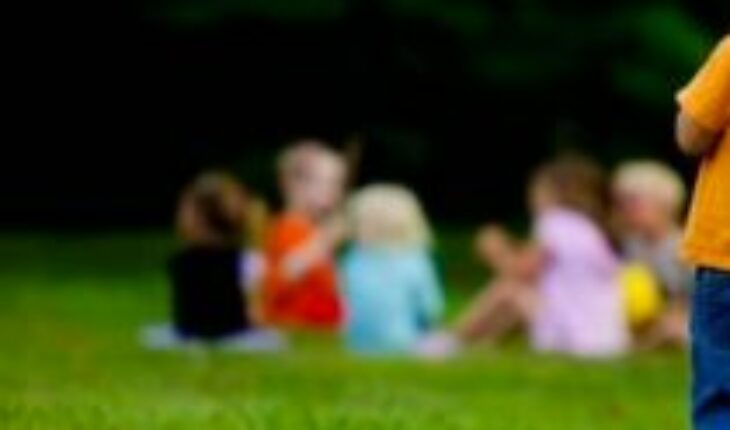According to figures provided by the World Health Organization, 1 in 160 children have a diagnosis of Autism Spectrum Disorder (ASD), a neurodevelopmental condition characterized by a diverse neurobiological development that is expressed in communicative, social, sensory-motor and behavioral differences.
It is common that during the first years of childhood the first indicators begin to be presented and it is essential to advance in early identification. “These characteristics are usually related to avoiding eye contact, not responding when they are called by name or not attending to the people responsible for care,” explains Marcela Tenorio, an academic at the School of Psychology of the Universidad de los Andes and alternate director of Micare.
Not all people on the autism spectrum (AD) are the same, that’s why we talk about spectrum. There is a huge variance, each person follows their own trajectory where the necessary supports change. “The characteristics linked to ASD are varied and there must be an interdisciplinary work to understand the necessary supports at all times,” adds Tenorio.
The communication of people within the EA varies greatly. “Some people within the spectrum have a very developed oral language and others have great difficulties to express themselves orally and therefore use other communicative modes that are more comfortable for them as communicators, signs, even artistic expressions,” says Verónica Vidal, an academic at the School of Speech Therapy and the Department of Epidemiology and Health Studies UANDES.
Currently, Verónica Vidal is working, together with other specialists, on a research that seeks to better characterize the communication skills of this population. “This research is one of our work edges,” says the academic. The other aims to develop accompaniment programs that facilitate interaction with peers,” he explains.
According to Val specialist, one of the issues of high relevance and that has been partially addressed is the consideration of the environment as an essential factor of inclusion. In this sense, it is important that the identification processes are aligned with the international standard and that the accompaniment programs are respectful of individual identity and rights and are based on scientific evidence.
For some people with autism, work on sensory intergration may be relevant. “Through sensory integration, we work on the ability of the brain to receive information about the sensations of our body and environment, generating a response to these stimuli, participating in the different activities of daily life and providing an efficient, creative, autonomous and satisfactory response,” explains Claudia Prieto, academic at the School of Occupational Therapy.
“People who have this condition of ASD, are also part of our community, so it is a challenge to facilitate their participation in the different activities in which they are involved, in that way we do and promote their autonomy and ‘be part of'”, concludes Prieto.
Neurodevelopmental condition
Children and adults with Autism Spectrum Disorder (ASD) have different abilities and needs and that is why “one of the first changes that must be made is to use the word condition and not disorder to refer to them and them. They have the right to live a full life and that is the great goal of the commemoration of World Autism Awareness Day,” he says. Rebeca Pemjean, academic of Speech Therapy at the University of San Sebastian.
What outstanding debts exist towards people with autism?
The first is to continue working to move forward with the Autism Law that is being processed in Congress, with the aim of establishing the need and obligation of the State to provide support. There must also be true and early recognition of autism in children and adults who were not diagnosed in time, including those living on the streets.
How should you relate to a person with autism?
It should be understood that during a conversation and unlike neurotypical people, those who have autism do not tand will look into the eyes because it is uncomfortable. In addition, you have to be very careful with proximity or proxemia and especially with physical contact. The same in the way of talking to him because there are things that they will not understand such as some jokes or interpretable or double-entendre situations.
How is it detected?
A doctor makes the diagnosis from observing a child’s social interaction and flexibility of thinking. They have rigid ways of elaborating their behaviors, they do their things in the same way and any change mismatches them. They may not make eye contact, nor respond to the communicative intention of others and when they speak, they often do it for themselves, especially in childhood. Its diagnosis can be made from 1 year and six months of age.
And in the case of adults?
Many times it is psychologists who diagnose autism that was not detected in childhood and it is very likely that these people have a tendency to anxiety and depression In the case of women, autism is a little different and it happens that sometimes they believe that it is a mental pathology, because, for example, they were bothered by noises, refused to be approached by anyone, and had an ariscan or distant attitude.
What else is often confused with?
When they are children it is confused with language disorders, because one of the symptoms is a late onset of this ability and, for example, a child is two or three years old and does not speak anything. Sometimes the same thing happens with attention deficit disorders. In adults, it is confused with anxious and obsessive compulsive disorders.
Rebeca Pemjean concludes that autism is a neurodevelopmental condition that will be present throughout a person’s life, but over time “it learns and adapts to some things such as, for example, being able to establish eye contact with another over time.”
Autism Awareness Day: How do we move towards the full social participation of people with autism?
April 2, 2022 |





